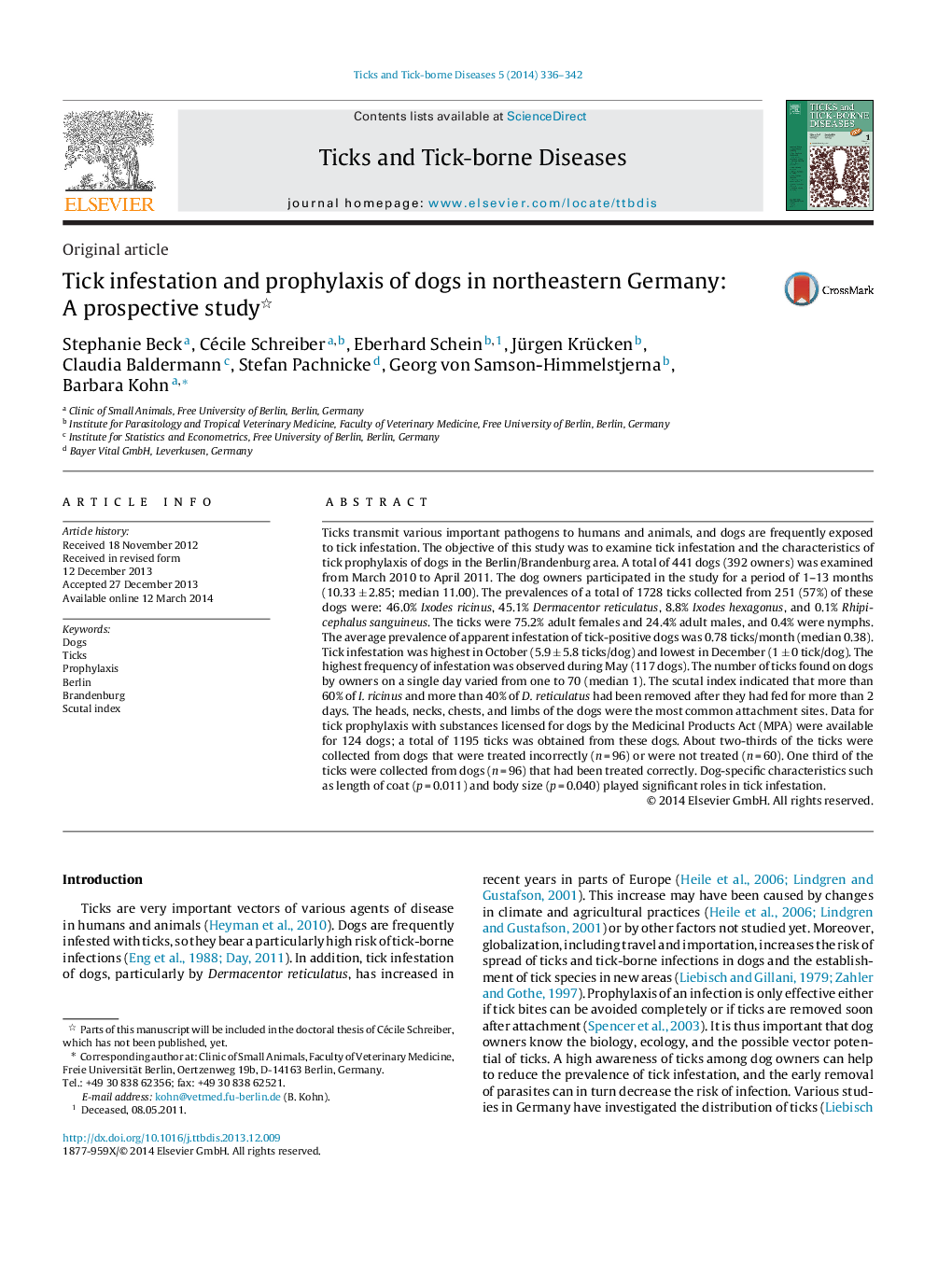| کد مقاله | کد نشریه | سال انتشار | مقاله انگلیسی | نسخه تمام متن |
|---|---|---|---|---|
| 2474090 | 1113113 | 2014 | 7 صفحه PDF | دانلود رایگان |
Ticks transmit various important pathogens to humans and animals, and dogs are frequently exposed to tick infestation. The objective of this study was to examine tick infestation and the characteristics of tick prophylaxis of dogs in the Berlin/Brandenburg area. A total of 441 dogs (392 owners) was examined from March 2010 to April 2011. The dog owners participated in the study for a period of 1–13 months (10.33 ± 2.85; median 11.00). The prevalences of a total of 1728 ticks collected from 251 (57%) of these dogs were: 46.0% Ixodes ricinus, 45.1% Dermacentor reticulatus, 8.8% Ixodes hexagonus, and 0.1% Rhipicephalus sanguineus. The ticks were 75.2% adult females and 24.4% adult males, and 0.4% were nymphs. The average prevalence of apparent infestation of tick-positive dogs was 0.78 ticks/month (median 0.38). Tick infestation was highest in October (5.9 ± 5.8 ticks/dog) and lowest in December (1 ± 0 tick/dog). The highest frequency of infestation was observed during May (117 dogs). The number of ticks found on dogs by owners on a single day varied from one to 70 (median 1). The scutal index indicated that more than 60% of I. ricinus and more than 40% of D. reticulatus had been removed after they had fed for more than 2 days. The heads, necks, chests, and limbs of the dogs were the most common attachment sites. Data for tick prophylaxis with substances licensed for dogs by the Medicinal Products Act (MPA) were available for 124 dogs; a total of 1195 ticks was obtained from these dogs. About two-thirds of the ticks were collected from dogs that were treated incorrectly (n = 96) or were not treated (n = 60). One third of the ticks were collected from dogs (n = 96) that had been treated correctly. Dog-specific characteristics such as length of coat (p = 0.011) and body size (p = 0.040) played significant roles in tick infestation.
Journal: Ticks and Tick-borne Diseases - Volume 5, Issue 3, April 2014, Pages 336–342
